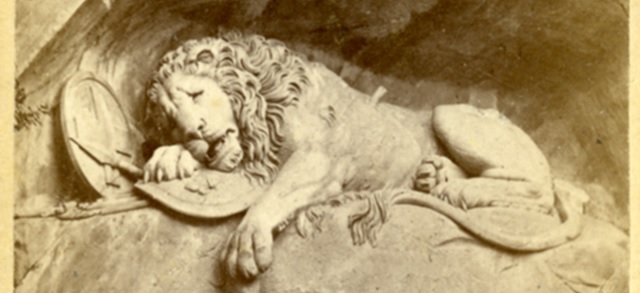
Monuments Class Projects
Architect/Sculptor of Monument
Unknown
Preview

Medium
photograph, carte-de-viste
Keywords
Matthew Perry, Commodore, Navy, Treaty of Kanagawa, Ito Hirobumi, 1901, Perry Park, Yokosuka, Japan, Asia, US-Japanese Relations, Perry Expedition, Opening of Japan
Physical Dimensions
4.25 x 2.5"
Date of Publication
c. 1900-1903
Name of Monument
Commodore Perry Landing Memorial
Date of Completion or Dedication of Monument
7-14-1901
City of Monument
Yokosuka
Location within City
Perry Park
State/Province of Monument
Kurihama
Country of Monument
Japan
Description
This carte-de-visite photograph shows the Commodore Perry Landing Memorial, which honors the commander of the United States East India Squadron, Matthew Perry, who landed in this spot in 1853. It was erected on July 14, 1901 to commemorate the 48th anniversary of the landing of Commodore Perry in a village named Kurihama, which was later integrated into the city of Yokosuka.
School of Art/Architecture
Boulder, Japanese
Publisher
Unknown
Digital Date
2-14-2025
Copyright
Original physical carte-de-visite is in the public domain. Digital copy scanned by Rod Library, ©2022 Rod Library, University of Northern Iowa
Rights Advisory
Original print carte-de-visite card is in the public domain; U.S. and International copyright laws protect this digital object. Commercial use of this digital object is not permitted without prior permission of the copyright holder.
Creative Commons License

This work is licensed under a Creative Commons Attribution-NonCommercial 4.0 International License
File Format
image/jpeg



Comments
Commodore Matthew Perry (1794 - 1858) was an American Naval Officer who commanded the United States East India Squadron. He helped to end the isolation of Japan, which was sealed off from the world at the time, after delivering President Millard Fillmore’s letter that demanded Japan open its ports to trade. He arrived on July 14, 1853. Fillmore’s letter led to the Treaty of Peace and Amity, which would become an alliance between the two countries. According to the Library of Congress: “Consisting of 12 articles, the treaty proclaimed everlasting peace and amity between the two countries and approved the opening of the Shimoda and Hakodate ports, the supply of fuel and water, and the establishment of a U.S. consulate in Japan” (Library of Congress).
Almost 50 years later, Japan commissioned this monument to commemorate Perry’s role in opening the world of trade to Japan which led to its rapid modernization and integration with the global community. The architect who created the monument is unknown, but a member of Perry’s honor guard, Lester Beardslee, along with a Japanese baron, Kaneko Kentaro, convinced the Beiyukai (Friends of America Society) to provide money for the erection of a monument in his honor. They raised sufficient funds and the monument was erected on July 14th, 1901, at the place where Commodore Perry first landed 48 years earlier.
The monument's style is a stepped base and a smooth-faced boulder. It features vertical Japanese characters, which were originally written by Japan’s first prime minister, Ito Hirobumi. They read: “Monument Commemorating the Landing of Commodore Perry of the United States Navy” (OldTokyo.com). It now also features a plaque that was not part of the original monument and is thought to have been added during the 1930s or 1940s, which reads, in English: “Monument in Commemoration of the Landing of Commodore Perry * U.S.N. / Marquis Hirobumi Ito Grand * Order of Chrysanthemum” (OldTokyo.com). This inscription commemorates Commodore Matthew Perry of the United States Navy and former Japan Prime Minister Ito Hirobumi. Hirobumi received the highest ranking honor in Japan, the Order of Chrysanthemum which is given to those who are part of the Japanese royal family.
The monument is in the middle of Perry Park, which is located in Yokosuka (formerly known as Kurihama), Japan. Writing on the back of this picture indicates that this monument was visited by two American servicemen named S.A. Ferry and J.S. Bradley, who were escorted by two Japanese women named Ms. Suzuki Hana and Ms. Shimoda Kimi, on August 23, 1903. Ferry and Bradley arrived on the U.S. Army Transport Dix (which was a naval ship launched in 1892 and scrapped in 1928). They bought these pictures as souvenirs.
There have not been any significant changes to the monument since the addition of the plaques in the 1930s and 40s. It survived World War II with no damage, and it is still standing today.